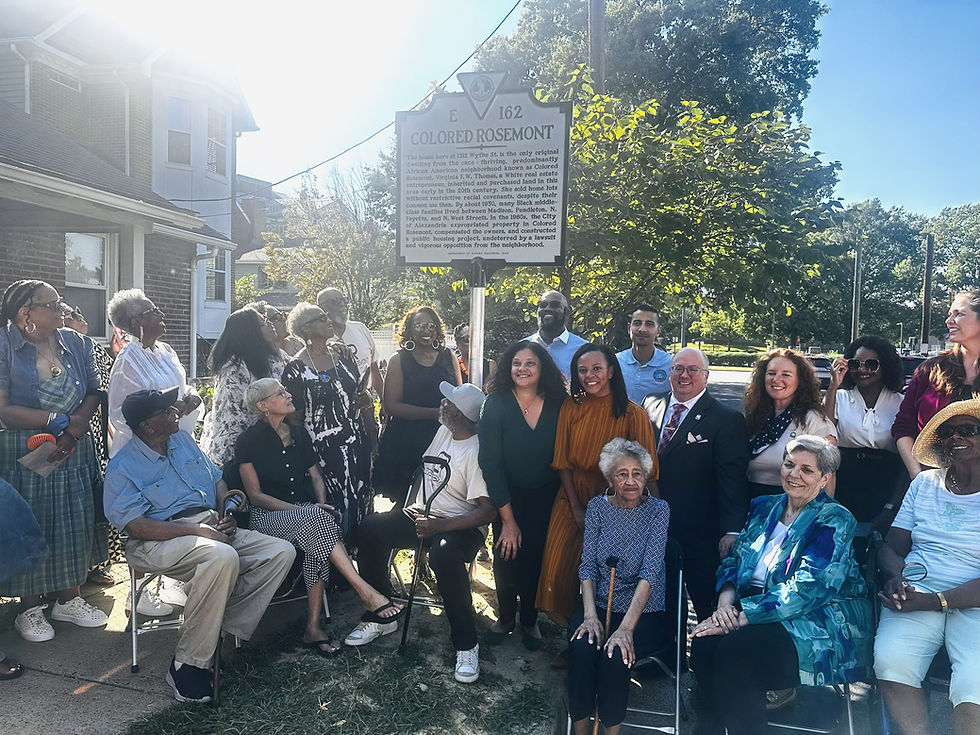Vietnam War Exhibit Coming to Northern Virginia
- Mike Salmon
- Aug 25
- 4 min read
Updated: Sep 8

It was the nation’s most divisive war. It was the first television war. It was a helicopter war. These are the labels some attach to the United States’ war in Vietnam, waged from 1964 to 1973.
An exhibit at the Fairfax Museum and Visitor Center in Fairfax City titled “Virginia and the Vietnam War” from Sept. 15 to Oct. 27 weaves together the perspectives and experiences of Virginians affected by the Vietnam War. Over 2.3 million Americans served in Vietnam in every branch of the U.S. military. Over 230,000 Virginians served in Vietnam and 1,490 Virginians died there.
The exhibit introduces Virginians who were diplomats, veterans, refugees, family members, war supporters and anti-war activists through 27 oral histories, personal memorabilia, artifacts and photographs.
A Controversial War
The Vietnam War roiled college campuses, spilled into the streets and pitted young people against their elders, veterans against civilians. A Youth International Party, counterculture Yippie flag from an anti-war demonstration, symbolizes the protests.
A Television War
The war was dubbed America’s “first television war” because the realities of the war came right into living rooms from on-site television crews and print journalists reporting from combat zones.
In a display showing a couple watching television, visitors read, “Families on the home front often received contradictory messages from soldiers who sought to reassure them, and news reports, which showed the violence of America's first 'television war.' Images of battles, crashes, and coffins troubled Virginians, many worried about their sons, brothers, fathers, and friends as casualties mounted and as men went missing or became prisoners. Loved ones carried an emotional weight that few soldiers grasped during the war."
A Helicopter War
The UH-1 Huey helicopter became the vehicle of choice in the war and a powerful symbol. American forces relied on up to 12,000 helicopters for combat, transport, medical evacuation and resupply missions.
In an oral history, a soldier painfully recalls putting his injured buddies on stretchers and sending them up to the chopper.
Susan Bradshaw McLean’s bracelet, made from a helicopter tail rotor chain, was a reward for surviving a crash. McLean was a Red Cross volunteer called a “Donut Dollie,” women who took supplies to the servicemen.
Also featured is McLean’s 1970 Claymore bag. Soldiers carried mines and accessories in these canvas bags. Hers, repurposed, has pins representing the military units she supported.
The little solace that soldiers could find is represented by a ticket to a 1971 Bob Hope Christmas show in Da Nang. Entertainers like Hope and Les Brown, Bibles and prayer books provided some comfort. A silk blood chit displayed has 14 languages to help aviators communicate with locals if they were downed.
“There small objects told big stories about the politics, policies and operations of the war, as well as its emotional impact,” wrote curator Emilie Raymond.
The “Families and the Homefront” exhibit highlights support from the homeland. Portsmouth Virginia students made and sent fruitcake care packages. Richmonder Phyllis Galanti embroidered a Merry Christmas message on a towel and sent it to her husband, Paul, who was a prisoner of war from 1966 to 1973.
Agitation and Aftermath
The controversy swirling around the war surfaces in the section titled “Activism,” through protest buttons, bumper stickers and banners. Some men tore up their draft cards and became draft dodgers. Some conscientious objectors left the country. Two Virginians interviewed were objectors. Philip H. Wilayto advised people to avoid this “bad war,” an “unjust war” and Ben Ragsdale organized protests.
Visitors learn that unlike the World War II “greatest generation” heroes who returned to grateful Americans many Vietnam veterans faced cold receptions. Some veterans were silent about their war experiences for years and tried to forget it. A Vietnam veterans cap symbolizes one soldier’s “coming out,” says the exhibit.
After the war ended in 1973 with the Paris Peace Accords, the last American troops left Vietnam and North Vietnam captured South Vietnam’s capital, Saigon, in1975.
Thousands of U.S. personnel and South Vietnamese were evacuated. Len Tran in his oral history and a display recounts how his family fled in 1982 on a 20-foot-long fishing boat with 23 others. They eventually made it to Richmond in the dead of winter without warm clothes. His second-grade drawing of his home in Vietnam is a poignant symbol of the trauma of displacement.
Virginia today is home to 60,000 Vietnamese-Americans. One group of Vietnamese merchants set up shop in the Clarendon section of Arlington informally called “Little Saigon,” but were displaced by Metro subway construction.
The Eden Center in Falls Church today is one of the country’s largest Vietnamese-American shopping centers. It is named after the Eden Arcade market in Ho Chi Minh City.
The oral histories are available online and at the exhibits. Dr. Raymond is Professor and Director Graduate Studies, Department of History, Virginia Commonwealth University.
Information: https://virginiahistory.org/ and https://www.fairfaxva.gov/Fun-Facilities/Cultural-Arts-and-History/Fairfax-Museum


.png)


